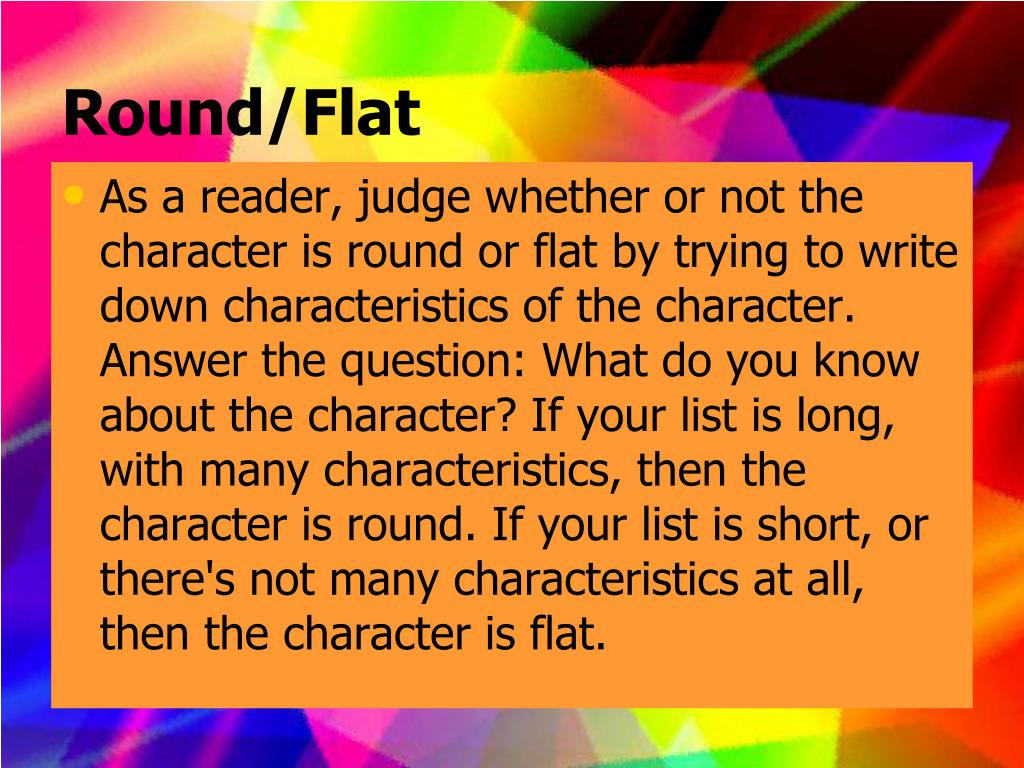

And the occasional flat character can even benefit your narrative! Charles Dickens, for instance, was a genius at writing casts that were packed with memorable caricatures. Are flat characters bad?Īgain, having two-dimensional characters never spells automatic death for your book.

To learn more about the flip side of the equation, we wrote extensively about what makes a dynamic character here. That means that, generally speaking, all two-dimensional characters are static, but not all static characters are two-dimensional. “Flat” is a referendum on the character's complexity. “Static” (or its inverse, “dynamic”) strictly describes the amount of change that a character undergoes throughout the story. Experience mental and emotional changesįlat characters are also sometimes referred to as “one-dimensional” or “two-dimensional." Both of these monikers point to the same thing: a character who has very minimal complexity, and often renders the story less believable as a result.Ĭlick to tweet! Not all static characters are flatĭon't make the mistake of conflating a flat character with a static character.Undergo significant character development.Whereas a three-dimensional or round character will typically: In other words, they're the opposite of a " round character," who has a fully fleshed out profile and changes throughout the story. They also don't undergo any kind of change to make them more well-rounded.

What is a flat character?Ī flat character is a character with little to no complex emotions, motivations, or personality. especially if you're not exactly sure what constitutes one. Sometimes the hardest part is simply identifying when you do have a flat character on your hands.


 0 kommentar(er)
0 kommentar(er)
